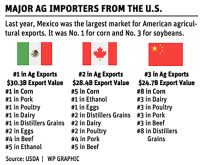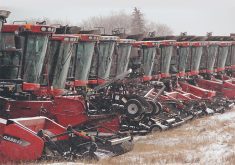Investment needed | U.S. waterway official warns of looming crisis
SAN ANTONIO, Texas — U.S. farmers are trying to avert a looming transportation crisis.
Crumbling locks and dams pose a serious threat to commodities moving up and down American waterways.
More than 60 percent of the country’s corn and soybean exports use the country’s river systems to get to port and a significant amount of fertilizer flows the other way.
“We’ve got an infrastructure that is typically between 60 and 90 years old, and they were designed to last 40 years, so we are near crisis mode with respect to locks and dams,” said Paul Rohde, vice-president of the Midwest area for the Waterways Council Inc.
Read Also

Organic farmers urged to make better use of trade deals
Organic growers should be singing CUSMA’s praises, according to the Canadian Chamber of Commerce.
“If we expect them to continue to operate efficiently into the 21st century, we’ve got to do some major capital development on them.”
The U.S. House and Senate passed their versions of the Water Resources Development Act last year.
Rohde expects the two arms of government to come to an agreement on a joint version of the bill in the first or second quarters of this year.
It will be an authorization bill that includes several reforms that operators and carriers have been seeking.
“It will essentially streamline the process of the design and construction of the locks and dams,” he said.
“It prioritizes the backlog of construction that we have for locks and dams.”
Rohde said 22 projects in most dire need of attention have been prioritized in the bill by industry and the U.S. Army Corps of Engineers.
Danny Murphy, chair of the American Soybean Association, said the bill includes important safeguards for the Harbor Maintenance Trust Fund.
“Congress has really raided that fund, and instead of using those funds for dredging and harbour maintenance, they’ve used them for other general obligations of the U.S. government,” he said.
It also streamlines the process of environmental permits and studies that the U.S. Army Corps of Engineers requires when it undertakes a construction project.
Murphy said the bill is needed to ensure U.S. grain and oilseed exports remain competitive.
“We’re just thankful that we’ve got an efficient system, and we just need to make sure we keep that in place,” he said.
Garry Niemeyer, first vice-president of the National Corn Growers Association, said the United States spends $2 billion a year on transportation infrastructure improvements, compared to $30 billion in China and $20 billion in Brazil.
“We’re not in the game. We have to get back in the game,” he said.
The Water Resources Development Act grants permission to build but doesn’t provide money for the projects.
Funding comes from a combination of appropriations legislation and a 20 cents per gallon tax on barge fuel.
Separate legislation has been drafted to increase the tax by 30 to 45 percent, or six to nine cents per gallon, to fund the infrastructure projects.
Niemeyer said the tax increase will cost the average farmer half a cent a bushel on his crops but is well worth it because waterways are the cheapest way to move crops to market.
















